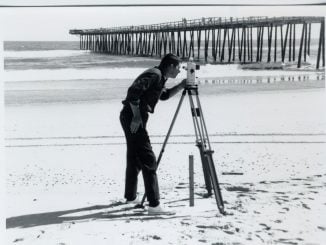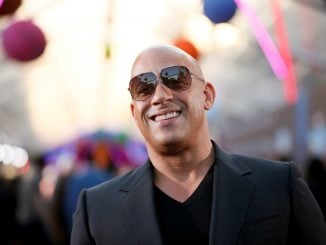
Los Angeles – When you watch the 1959 “Ben-Hur,” a studio classic so big and stodgy and literal that even the dialogue seems square-jawed, there’s something that tugs you right through the endless talk about high ideals and the birth of Christianityand no, it’s not just the promise that after three hours, you’re going to get to see the chariot race to end all chariot races. It’s the presence of an actor who’s like an oak tree among twigs. As the title stud-slave, Charlton Heston projects a strength that’s brawny but internalsturdiness resolved into muscle. Even his soul is clenched. He’s like a Hollywood glamour god sculpted by Michelangelo. You’d think that this sort of gladiatorial hero worship would have gone out of style, but, of course, you’d be wrong. It’s alive and kicking in a movie like “Gladiator,” where Russell Crowe turns vengeance into a brooding art form, or in any of the “Mad Max” films, which are the real heirs to the ancient-world action epic.But in the new “Ben-Hur,” when you watch the English actor Jack Huston take on the role of Judah Ben-Hur, the wealthy Jerusalem prince who is stripped, by the Romans, of his home and family and turned into a galley slave, you feel nothing primal in his presence. Huston, who comes from showbiz royalty (he’s the grandson of John Huston), isn’t a terrible actor, but he’s soft. He doesn’t pop. When he’s rowing, in chains, aboard that Roman war ship, he tells his captive comrades that they should no longer care, they should just survivethe kind of stoic advice you could imagine coming from Crowe’s Maximus. Yet when Huston says it, it sounds like a message from Unicef.With his hair grown girlishly long, and a beard to match, and eyes peering out in more sadness than anger, Huston’s Judah resembles no one so much as George Harrison on the cover of “All Things Must Pass.” He’s a slave who has turned himself into a doleful peacenik. Jesus Christ is a full-scale character in Ben-Hur (he’s played, with a minimum of heavenly aura, by Rodrigo Santoro), but you almost feel like the casting should have been flipped. Huston, who has a Christ-like beatitude (and physique), is way too saintly to be convincing as a guy who could drive four white horses with a whip and a sneer of death.Minus a hero who has the macho charisma to wrap a movie around him like he owned it, the new “Ben-Hur” is an oddly lackluster affair: sludgy and plodding, photographed (by Oliver Wood) in nondescript medium close-up, an epic that feels like a mini-series served up in bits and pieces. Actually, there’s one sequence that’s better than that, and that’s the chariot race. The director, the Kazakh-born kinetic stylist Timur Bekmambetov, who made “Night Watch” (2006) and the American schlock-on-overdrive movies “Wanted” (2008) and “Abraham Lincoln: Vampire Hunter” (2012), stages it with some of the same lurchingly explosive instability of the original. Chariots spin around corners on one wheel, drivers get trampled to death, rows of horses fall like dominoes, and mounds of dirt spray at the camera like something out of a sputtering contempo battle sequence. The madly teetering ancient vehicles seem to be joining in the most violent ritual on earth. In 1959, though, this all looked like nothing less than the invention of speed. That’s why the “Ben-Hur” chariot race is one of the three or four sequences that gave birth to modern action cinema, the others being the crop-dusting sequence in “North by Northwest” (a movie released the same year) and the car chase in “Bullitt” (1968).In the new “Ben-Hur,” we’re just watching a propulsive rerun, with Judah, his Jesus locks shorn for the race, now looking like Ben-Hur of Beverly Hills. His foe is Messala, his adoptive brother (in the Heston version, they were childhood friends), played by Tony Kebbell, who suggests a lean, glowering Tony Robbins in Roman bangs. He looks malicious enough that you wish the movie didn’t need to spend its first half laboriously setting up the estrangement between brothers. Messala storms off to stalk the world as an officer in the Roman Army, and when he returns, in red cape and copper breastplate, after five years of conquering battle, he’s a true believer, sniffing out zealots to snuff. Judah, though he tries to stake out the reasonable middle ground, maintains the classic rich-kid view: He doesn’t want anything about his society to change because, as Huston plays it, his life is fine as is. (Maybe that’s what you project when you come from showbiz royalty.) He doesn’t want to rock the boat, and that’s why he ends up in the galley, rowing the boat.When the fleet he’s forced to join is attacked by the Greek Navy, it’s a grabber of a sequence, staged from the slaves’ point of view, though the 3D mostly has the effect of enhancing how CGI-heavy it is. Judah is shipwrecked on a desert commune presided over by Ilderim (Morgan Freeman), who in his luxurious gray dreadlocks looks like a holy man. But really, he just wants to make money sponsoring entries in chariot races. How convenient for Judah. Freeman has a puckishness that momentarily wakes up the proceedings, but the movie can’t seem to sustain anything. Even after the high of the chariot race, it plunges back into slipshod soap opera, though with enough time to accent the Crucifixion.The 1959 “Ben-Hur” was directed, by William Wyler, with a kind of fake classicism, and that was part of its cardboard studio-system majesty. It didn’t need to be subtle; it worked as mythological machismo. But the new “Ben-Hur” tries to “humanize” everything, starting with Huston’s overly moist Judah, and the result is that this story seems a lot less human than it did 57 years ago. It’s become a chariot of mire.



